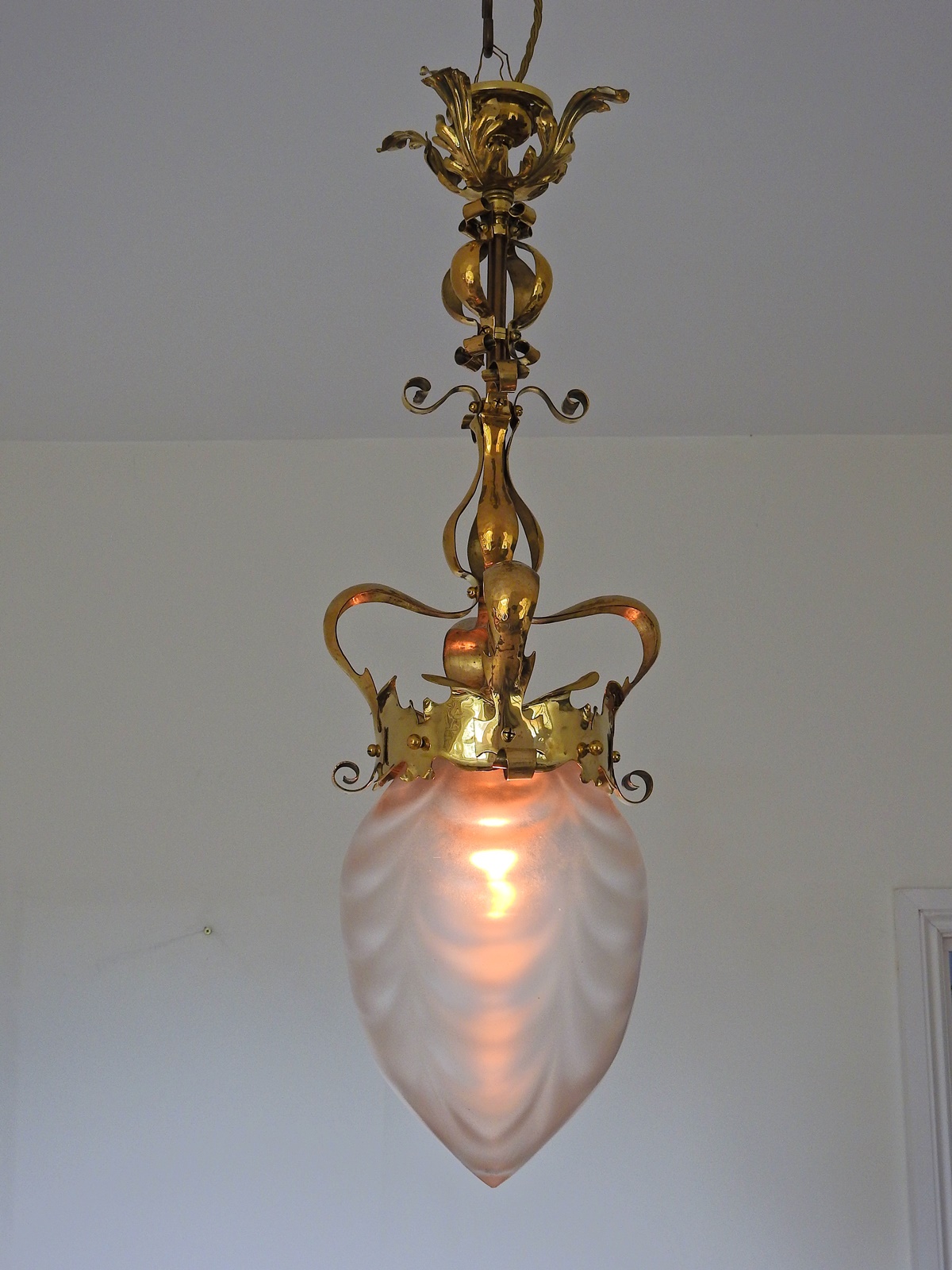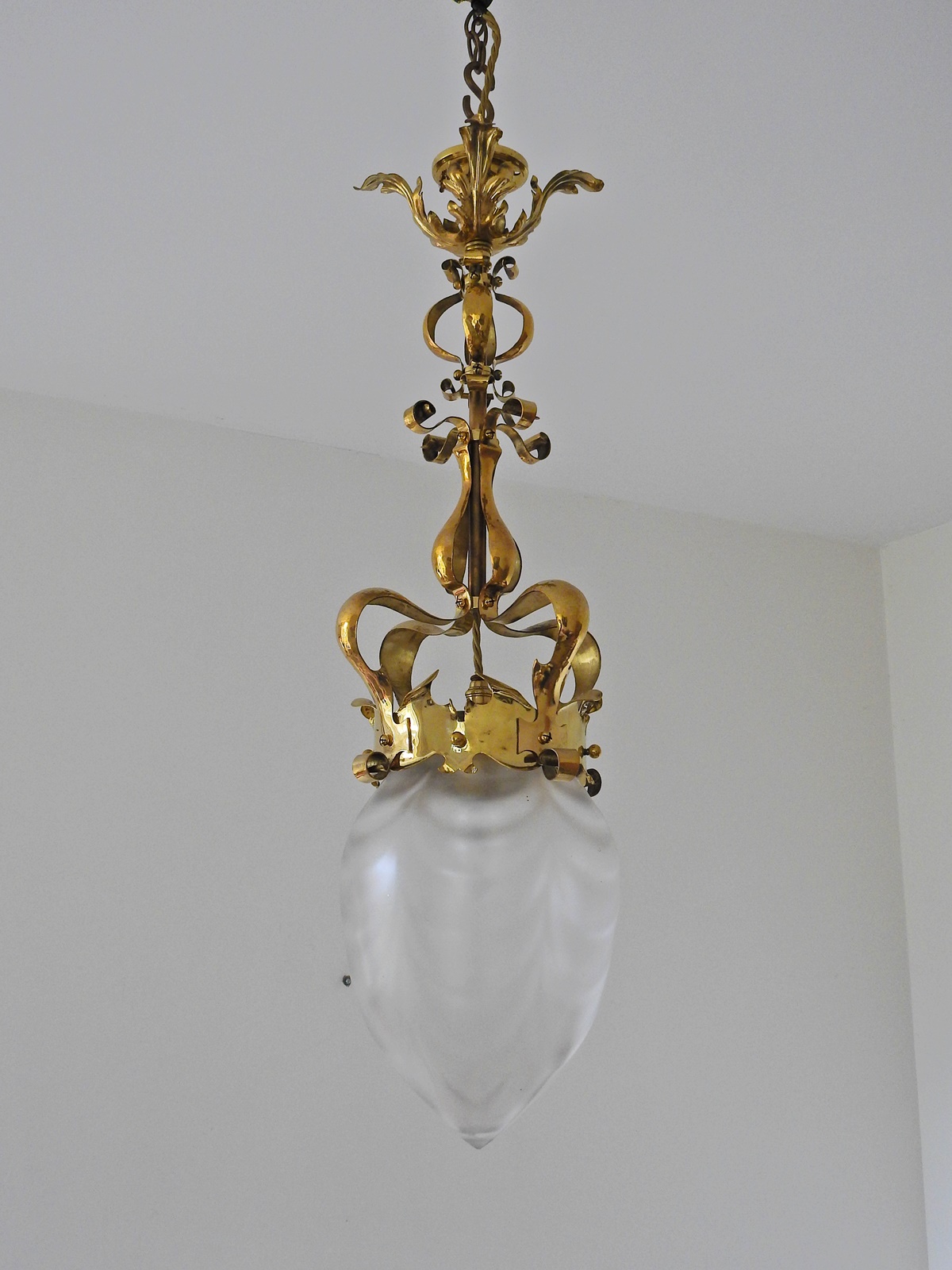Attributed F & C Osler, Birmingham | Brass Arts & Crafts Lantern | England c.1905 | SOLD
Product Code: LG451A brass and satin-glass arts and crafts lantern attributed to F & C Osler but apparently unsigned, the large ovoid satin-glass lampshade probably made by Thomas Webb due to the distinctive “cascade” pattern. F & C Osler were aslo based in London so the shade could have alternatively been blown at Whitefriars Glassworks. England circa 1905
Ht.74cm/29in, W.33/13, Ht(of shade).28/11, W(of shade)19/7.5
F & C Osler, Birmingham & London
- The company Osler was established in Birmingham, 1807 by Thomas Osler
- The business really began functioning in 1831 when his sons Abraham Follett & Thomas Clarkson took over and the company.
- Specialising in crystal glass chandeliers they opened a showroom filled with the best stock on Oxford Street.
- In the latter half of the 19th century Osler found success in India due to the countries wealth and efficient shipping links.
- The name F & C Osler was first recognised on 14th July 1906 when the children and grandchildren of Follett and Clarkson became the first directors.
- From 1911 the demand for simple clean pieces of glass was lost, however the demand for light fittings made entirely of metal was flourishing.
- This coincided nicely with the opportunity to acquire a lighting company named Faraday & Son Ltd in 1919 and the company became Osler & Faraday Ltd.
Stourbridge Glass, Birmingham
Thomas Webb & Sons, Henry G. Richardson & Sons, Stevens & Williams, John Walsh Walsh
- The industry was established at the beginning of the 17th century by glass-makers from Lorraine in north-eastern France
- The industry grew and evolved for the next 275 years and glass from Wordsley, Amblecote and Brierley Hill is recognised as amongst the finest in the world
- Birmingham Lighting designers such as Best & Lloyd, Faraday & Sons, Osler & Co, James Hinks & Son and Messenger & Sons employ the Stourbridge factories to produce the glass-ware for their lights.
- Mostly it is impossible to say which firm produced a particular lampshade but some patterns were registered/catalogued and can therefore occasionally be attributed.




